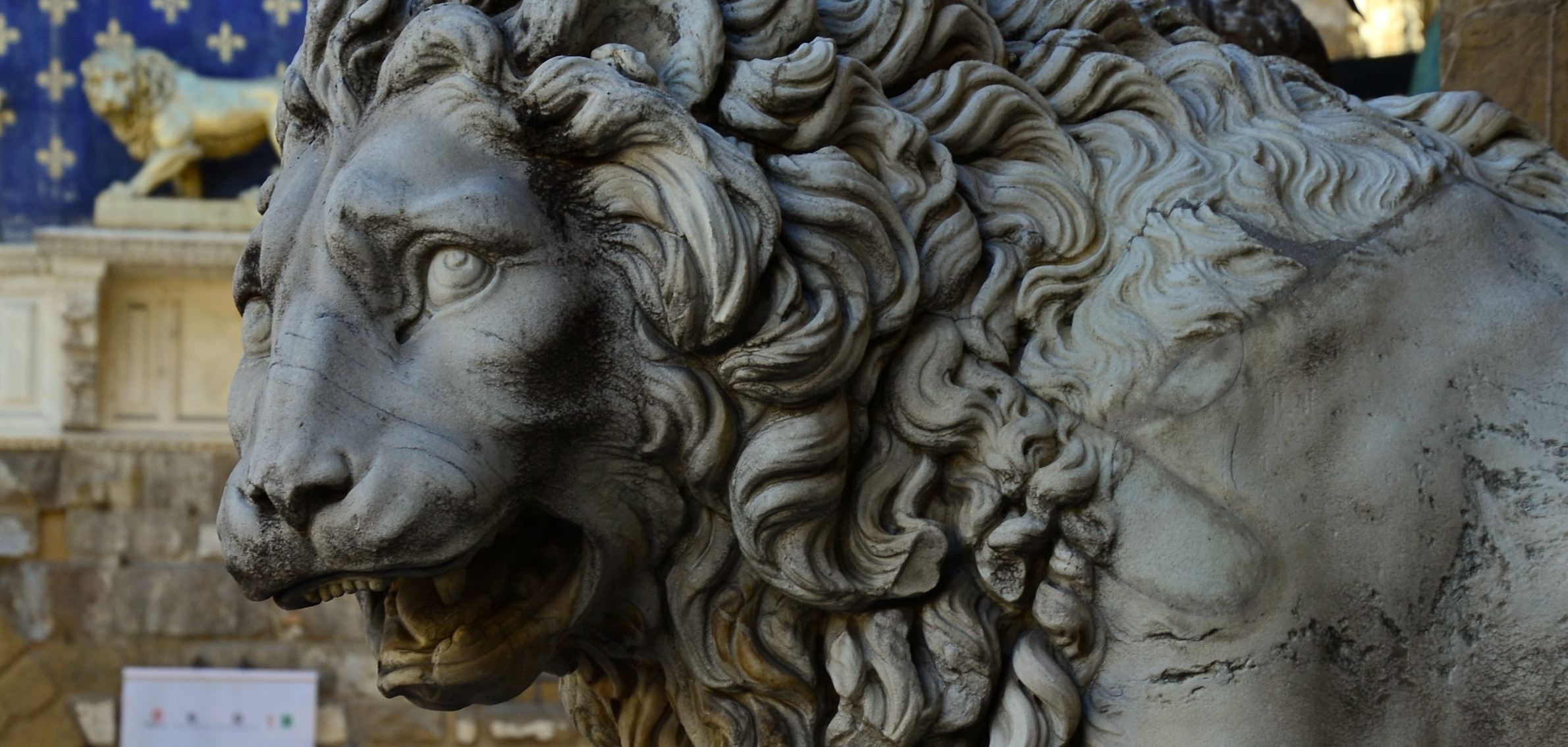
The lions of Florence
You might have noticed that lions are everywhere in Florence. Have you wondered why?
They are guarding Palazzo Vecchio and the Loggia de Lanzi, they are on the weathervane on top of the Arnolfo Tower, they are represented in coat of arms, in paintings, and even the bases of lamplights are shaped like lion's legs.
Statues of lions have been seen around Florence since the Middle Ages, legend tells that the Florentine Republic chose the symbol of the lion because this animal could tear apart the eagle, symbol of imperial power and of the rival Pisa.
The most famous lion statue in Florence is certainly the Marzocco. In the Divina Commedia, Dante reports the legend according to which the city of Florence was originally devoted to the god Mars. Near Ponte Vecchio there used to be a statue of the god of war, but it was swept away by the devastating flood of 1333 and it is said that it was replaced by the statue of a lion.
In fact the name "Marzocco" probably comes from the latin "martocus", that can be translated as "little Mars".
Sculpted by Donatello in the early XV century from the gray Tuscan stone called pietra serena, the Marzocco can be found outside Palazzo Vecchio (this one is a faithful copy, as the original is now in the Bargello Museum). Donatello's lion is seated with one paw supporting Florence’s coat-of-arms representing the lily, symbol of the city.
Again in Piazza della Signoria, the two famous Medici lions that came from Villa Medici have been flanking the Loggia dei Lanzi since the XVIII century.
REAL LIONS IN FLORENCE
A fact that not everybody knows perhaps, is that in Florence there were real lions and their presence is documented from the XIII century.
They were kept in cages, at first inside the Palazzo del Podestà (now the Bargello Museum), then they were moved in the place where the Loggia de Lanzi now is, and they were later moved again behind Palazzo Vecchio on the street that took its name from these animals, Via de Leoni.
A different account suggests that they were kept in Piazza San Giovanni, inside the Loggia del Bigallo. Perhaps, both stories are true, since there were various menageries in Florence, where a variety of animals were housed.
According to the legend, at the end of the XIII century one of the lions kept in the Loggia del Bigallo managed to get out of his cage and snatch a child, called Orlanduccio, from his mother's arms. Surprisingly the beast did not harm him, instead he let the mother take back her baby and he placidly allowed his guardians to lead him once again inside his cage.
The child became known as Orlanduccio of the lion, and it is said that he was spared because it was his fate to grow up and avenge his father's death, which according to the story, he eventually did.
NOT ONLY LIONS
It's hard to imagine a lion walking in the streets of Florence, but exotic animals were no stranger to the Florentines, who paid to see them in the many menageries scattered all over the city.
An example of the unusual Florentine fauna, is the famous giraffe of Lorenzo de Medici, brought to Florence in 1487 to take part in the Cavalcata dei Magi - the procession that took place on the 6th of January to celebrate the Epiphany - but unfortunately never made it to the event. The animal died four days before the procession, breaking his long neck that got stuck in the wooden beams of the room that had been set up for the him.
News that another unusual animal has lived in Florence comes to us from Vasari, who recalls that Rosso Fiorentino had a mischievous pet monkey called Bertuccione. The artist kept it in his studio, where it used to steal the grapes that monks grew in the monastery next door.
However, no other animal was ever as special as the lions for the Tuscan city. An unusual behaviour from their part and even their births and deaths were often seen as omens, so it's no surprise that the Florentines saw a deadly fight that among two of the city's lions as foreboding of Lorenzo de' Medici's death in 1492.
Even if these beasts have no longer been kept in Florence since the XVIII century, their symbolic value was not forgotten. One needs only to look around the city to see lion heads watching us, evidence of the surprisingly exotic past of Florence and of the Florentines' pride towards their city.



